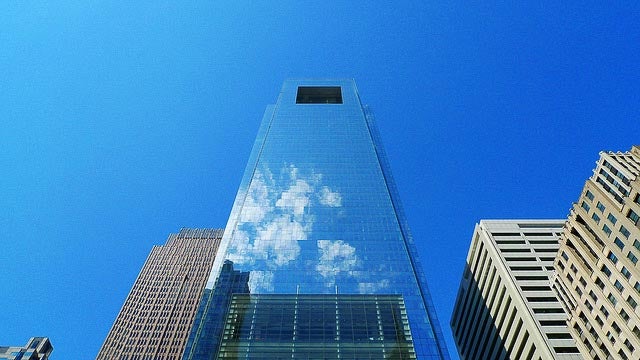Today, those green buildings are increasingly the standard and something few people get excited about. California essentially requires all new buildings to be LEED Gold certified, and in many places, energy efficiency and conservation are design necessities -- not amenities.
Now, a growing number of developers are instead pitching “healthy” buildings as the next big thing in construction.
“Health and design are pressing subjects in America and around the world,” said Gadi Kaufmann, managing director of real estate consulting firm RCLCO, at last week’s Urban Land Institute meeting in Houston. “Dealing with issues of health and aging puts the burden on developers to design the right places.”
In 2013, ULI launched its national “Building Healthy Places Initiative,” which aims to encourage developers to shape their projects in ways that improve the health of people and their communities.
Today, new approaches to constructing healthier buildings -- and particularly healthier workplaces -- are developing quickly.
The trends break down into two categories: changes to the structure of facilities and their energy consumption practices, and efforts to build healthier spaces and implement amenities that lead to healthy outcomes for building occupants.
Developers are changing how they redevelop existing buildings and the type of materials they use to decorate interior spaces. New and heavily renovated buildings often consist of recently-produced substances that will emit small amounts of harmful chemicals for years after their construction. By reusing materials that already exist within a building, choosing components made of less problematic materials (such as natural woods, rather than pressed wood) and working to repurpose existing spaces with minimal renovation, developers say the can cut down on exposure to these chemicals.
Further, by embracing natural ventilation and removing allergen-trapping elements like carpets, developers can stop the recirculation of harmful vapors and better regulate internal air quality.
Developers are also trying to make more granular-level changes that workers will directly notice. One trend is an effort to incorporate nature into the workspace by offering more access points to the outdoors or building outdoor work spaces conducive to relaxation and collaboration. Developers can also promote physical activity in a work space by creating walking paths, making stairs more visible, offering open office plans, and including facilities that have room for bicycles. Finally, creating room for more healthy options in developments such as building communal eating spaces with better food options, better drinking water, and smoking bans can lead to direct benefits for workers.
Still, developers who spoke at the Houston meeting acknowledged that questions remain about how such efforts fit into the finances of project development. Though each speaker demonstrated that “healthy” elements can be included in a building with relative ease and low costs, it’s still hard to convince some that they’ll get a return on the added expense.
Still, those that preach the healthy building gospel remain undeterred. “Like data on the returns from sustainable development, it will come,” said David Cropper, managing director of San Francisco-based TMG Partners.
In some cases, though, the data is already here. Clare De Briere of The Ratkovich Company, a real estate consultant, showed that the difference between the projected and real profits her company saw on the Alhambra project, a “healthy” development in Los Angeles was huge. While they expected to see a 20 percent initial rate of return, they instead saw a return of more than 40 percent. The firm also had greater retention among tenants, compared to other projects. While the entirety of this bump cannot be attributed to the building’s “healthy” characteristics, company officials believe that much of the success is rooted to the fact that the development is a place where tenants experienced the benefit of healthy elements and were willing to pay a premium to stay.
While more and more tenant businesses are embracing buildings that adhere to ULI’s healthy building principles, like developers, they too take convincing. Cognizant of the fact that “healthy” has not worked its way into the rental decisions of all tenants, many developers who own healthy buildings are pitching them simply as rich with amenities.
The advantage of this rhetorical tool is clear, as employers have become increasingly more aware of the fact that offering amenities helps with hiring and retention. All workers – especially the much-sought-after millennial -- increasingly demand access to a wide array of amenities within or nearby their workplaces.

